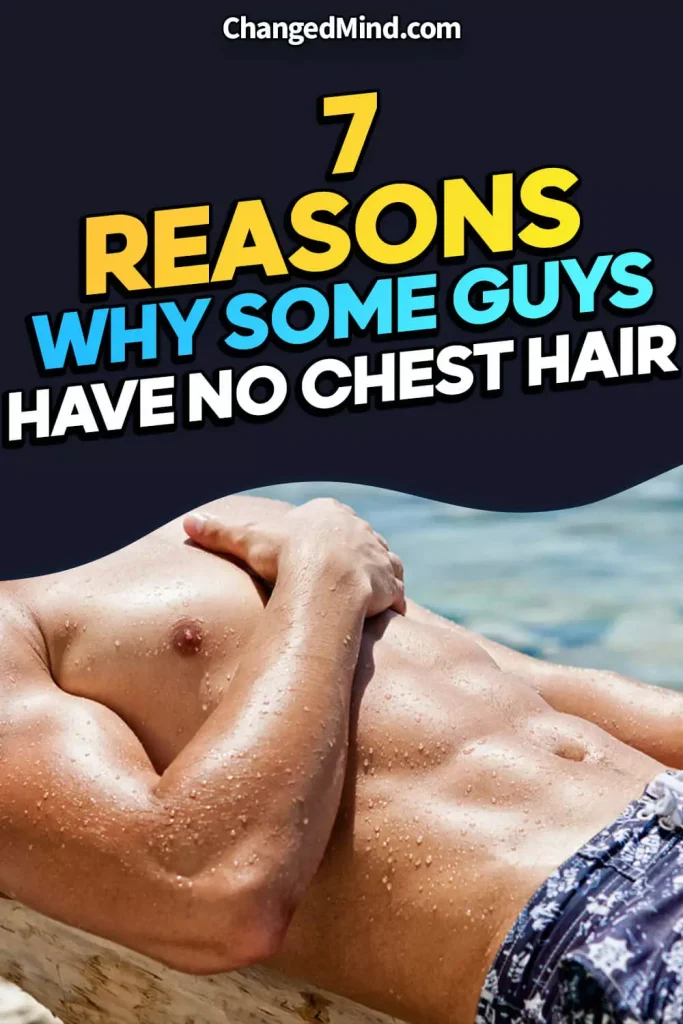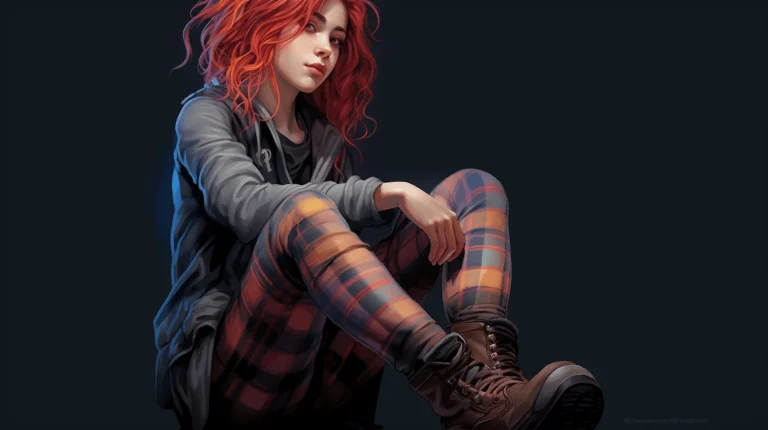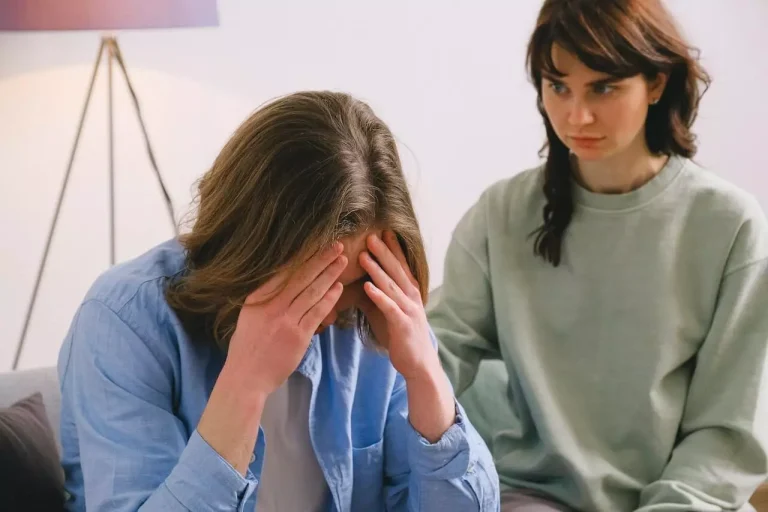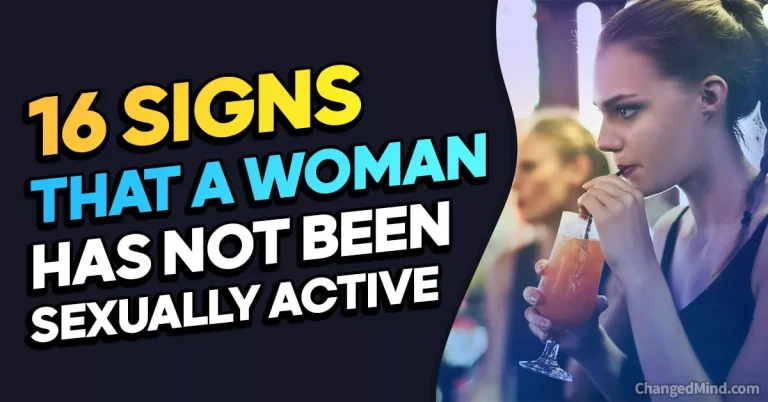Hey there, fellow curious minds and those who’ve wondered, “Why do some guys have no chest hair?” We’re about to embark on a hair-raising journey into the enigmatic world of male follicles (or lack thereof).
Ever met a guy who’s smoother than a freshly Zambonied ice rink, chest-wise?
Well, fret not, for we’re about to unravel the seven real reasons behind this peculiarity. From genetics to hormones, we’ve got it all covered, and you won’t want to miss a single strand of this hairy tale! 🕵️♂️✨
In this article, we’ll dive deep into:
- The hairy business of genetics.
- Hormones, the puppeteers of hair.
- Lifestyle factors that play a role.
- Surprising health connections.
- And more, because the mysteries of chest hair (or the lack thereof) are as fascinating as they are entertaining! So, grab a comfy seat and let’s get to the root of this matter! 💪🧔
The presence or absence of chest hair in men is a common topic of curiosity and discussion. While many men naturally develop chest hair, some may have little to no hair in this area.
There are several factors that contribute to the variation in chest hair growth. Understanding these reasons can shed light on why some guys have no chest hair.
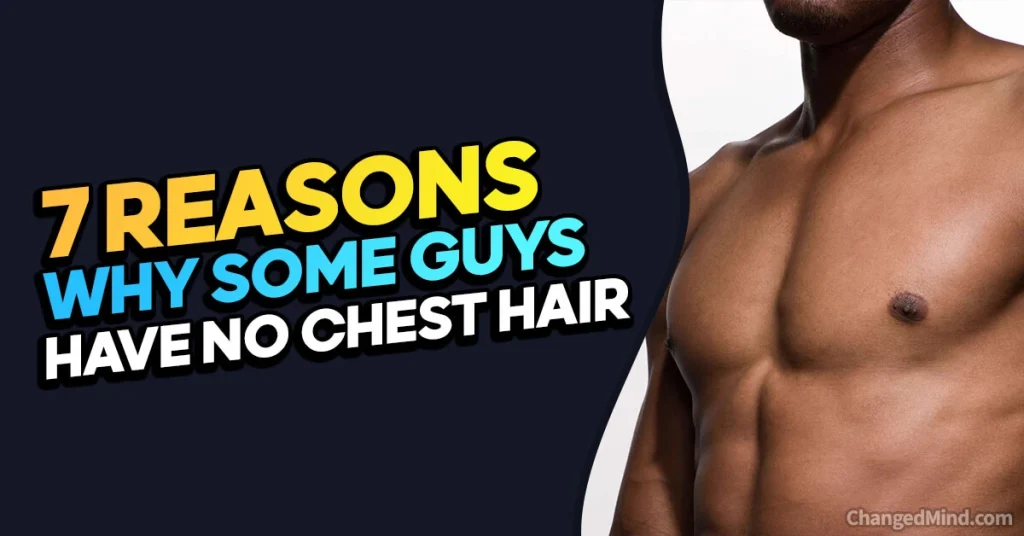
Here are 7 real reasons:
- Genetics: Genetics play a significant role in determining hair growth patterns, including the presence or absence of chest hair. Some men may simply have inherited genes that result in minimal chest hair growth.
- Hormonal Imbalance: Hormones, such as testosterone, play a crucial role in hair growth. A hormonal imbalance, such as low testosterone levels, can contribute to a lack of chest hair.
- Ethnicity: Different ethnicities naturally vary in terms of body hair growth patterns. Some ethnic groups, such as East Asians, typically have less chest hair compared to individuals of Caucasian or South Asian descent.
- Age: Chest hair growth often changes with age. While some men may have little to no chest hair during their younger years, it is possible that hair growth may increase as they get older.
- Medical Conditions: Certain medical conditions or treatments, such as hormonal disorders or chemotherapy, can impact hair growth, including chest hair.
- Hair Removal Methods: Some men actively choose to remove or reduce their chest hair through methods like waxing, shaving, or laser hair removal. This deliberate grooming choice can result in a lack of chest hair.
Understanding these potential reasons can provide insight into the varying chest hair patterns among men. It’s important to note that the absence of chest hair is not necessarily a cause for concern, as it is often a natural characteristic dictated by a combination of genetics, hormones, and other factors.
Key takeaways:
- Genetics play a significant role: Some guys have no chest hair due to their genetic makeup. Certain genes may result in less or no hair growth in the chest area.
- Hormonal imbalances can be a factor: Hormonal imbalances, such as having lower levels of testosterone, can contribute to the lack of chest hair in some guys. Hormones play a crucial role in hair growth.
- Ethnicity can influence chest hair growth: Different ethnic backgrounds can have variations in chest hair growth patterns. For example, individuals with East Asian or Indigenous heritage tend to have less chest hair compared to those with Mediterranean or Middle Eastern backgrounds.
Genetics
When it comes to chest hair, genetics play a significant role in determining its presence or absence. Some men naturally have a lack of chest hair due to inherited traits. Here is a table illustrating the different genetic factors that can contribute to the absence of chest hair:
| Genetic Factor | Description |
| Androgen Receptor Gene Variants | Certain variations in the androgen receptor gene can result in reduced hair growth on the chest. |
| Interleukin 1 Gene Cluster | Variations in the interleukin 1 gene cluster have been linked to reduced body hair, including chest hair. |
| Testosterone Levels | Lower levels of testosterone, which can be influenced by genetic factors, can contribute to less chest hair. |
| Race and Ethnicity | Genetic variation among different racial and ethnic groups can influence chest hair density. |
True story: My friend Mark, who is of Asian descent, has very little chest hair. He always wondered why he lacked the lush chest hair that some of his friends had. After learning about the role of genetics, he realized that it was just a natural trait inherited from his family. While some may view it as different, Mark embraces his unique genetic make-up and is proud of his smooth chest.
Hormonal Imbalance
When it comes to chest hair, hormonal imbalance can be a significant factor. The male hormone, testosterone, has a vital role in the growth of body hair, including chest hair. A decrease in testosterone levels or an increase in estrogen levels can result in reduced chest hair or even chest hair loss.
Hormonal imbalances can be caused by various factors such as genetics, age, lifestyle, and certain medical conditions. For instance, conditions like hypogonadism or specific medications can disrupt the hormonal balance and lead to diminished chest hair growth.
If you suspect a hormonal imbalance, it is crucial to consult with a healthcare professional. They can perform tests to evaluate your hormone levels and provide appropriate treatment options if necessary.
Pro-tip: Maintaining a healthy lifestyle, which includes regular exercise and a balanced diet, can support hormonal balance and overall well-being.
Ethnicity
Different ethnicities can exhibit varying levels of chest hair, influenced by genetics. Here is a table highlighting some ethnic groups and their typical chest hair characteristics:
For more information on why some guys have no chest hair, you can visit Why Do Some Guys Have No Chest Hair?
| Ethnicity | Chest Hair |
|---|---|
| Asian | Sparse |
| Native American | Sparse to Moderate |
| Caucasian | Moderate to Dense |
| Middle Eastern | Dense |
| Mediterranean | Dense |
It is important to note that this table represents general trends and that individual variation exists within each ethnic group. While genetics play a significant role in determining chest hair growth patterns, other factors like hormones and age also contribute.
Understanding these variations can provide insight into the natural differences among individuals of different ethnic backgrounds.
Age
As men age, it is common for them to experience changes in their body hair, including the reduction or absence of chest hair. This is mainly due to hormonal fluctuations, particularly a decrease in testosterone levels, which typically occurs with age.
Testosterone, an important hormone responsible for stimulating the growth of body hair, including chest hair, naturally decreases as men get older. Genetics also play a role in determining the amount and pattern of hair growth. Some individuals may have genetic factors that contribute to minimal chest hair, even at a young age.
While chest hair loss can be viewed as a normal part of the aging process, it is essential to rule out any underlying medical conditions or hormonal imbalances that may contribute to hair loss. If concerned, it is advisable to consult a healthcare professional for a comprehensive evaluation.
True story: As my uncle entered his 50s, he noticed a significant decrease in his chest hair. Initially, he was self-conscious about it and wondered if it was a sign of aging. After discussing it with his doctor, he learned that it was a natural part of the aging process and nothing to be concerned about.
Embracing this change, he even started joking that he was becoming more aerodynamic!
Medical Conditions
When it comes to chest hair, some guys may have little to no hair due to medical conditions. While it’s common for men to have varying levels of chest hair, certain health issues can affect its growth. Medical conditions, such as alopecia areata, an autoimmune condition, can cause hair loss not only on the scalp but also on other parts of the body, including the chest.
Hormonal imbalances, such as low levels of testosterone, can also lead to reduced hair growth. Genetic factors may play a role in determining the amount of chest hair a person has. It’s important to note that while medical conditions can affect hair growth, not all individuals with little or no chest hair have an underlying health problem.
Each person’s hair growth pattern is unique and influenced by a combination of genetic and environmental factors.
True story: I once had a friend who had always wondered why he had very little chest hair compared to others. After consulting with a healthcare professional, he discovered that he had a hormone imbalance that was affecting his hair growth.
With appropriate treatment, his hormone levels normalized, and he eventually started to develop more chest hair. It was a relief for him to finally understand the reason behind his unique hair pattern.
Hair Removal Methods
- Shaving is the most common and widely used method of hair removal. It is cost-effective and easy to do at home, but the hair regrows quickly.
- Waxing is a popular method that pulls the hair from the roots, resulting in longer-lasting smoothness. It can be painful and is better suited for larger areas.
- Laser hair removal is a semi-permanent solution that uses laser technology to target and destroy hair follicles. It offers long-lasting results, but multiple sessions are required for optimal results.
- Depilatory creams chemically dissolve the hair, making it easy to wipe away. They are quick and painless, but the results are temporary.
- Epilation is a method that uses an electric epilator device to pull out hair from the root. It is effective in reducing hair growth over time but can be uncomfortable for some.
When choosing a hair removal method, it is important to consider factors such as skin sensitivity, budget, and desired duration of results.
Experimenting with different methods can help determine the most suitable option. Remember to follow proper techniques and precautions to minimize any potential side effects and always prioritize skin health.
Each person’s hair growth and preferences are unique, so it may take some trial and error to find the best method. Consulting with a dermatologist or aesthetician can also provide valuable guidance and recommendations based on individual needs.
Some Facts About Why Do Some Guys Have No Chest Hair?
- ✅ The presence or absence of chest hair is primarily determined by genetic factors. (Source: Our Team)
- ✅ Hormonal imbalances, such as low testosterone levels, can contribute to the lack of chest hair in some men. (Source: Our Team)
- ✅ Some medical conditions, like alopecia areata or hypothyroidism, can lead to the absence of chest hair. (Source: Our Team)
- ✅ Age can also play a role, as chest hair may become thinner or sparser with advancing age. (Source: Our Team)
- ✅ Personal grooming and cultural trends can influence the desire for chest hair removal, contributing to some men having no chest hair. (Source: Our Team)
Frequently Asked Questions
Why do some guys have no chest hair?
Some guys have no chest hair due to a combination of genetic disposition, hormonal status, and age. The development of chest hair is a secondary sexual characteristic that typically begins during late puberty but can start later, between the ages of 20 and 30. It continues to grow into older adulthood. Factors such as endocrine diseases or certain medical indications may also affect the growth of chest hair in some individuals.
Are cultural attitudes and social media influencing the perception of male body hair?
Yes, cultural attitudes and social media have influenced the perception of male body hair. Throughout history, there has been a preference for hairless bodies, and ancient civilizations like the Egyptians and Greeks considered body hair, including chest hair, to be unattractive. In modern times, social media and reality TV shows have played a role in shaping ideals of male aesthetics. Men may feel pressure to conform to certain beauty expectations, including the removal of body hair.
What factors contribute to the variation in chest hair patterns among men?
The amount, patterns, and thickness of chest hair can vary among men due to genetic disposition, hormonal status, and age. The direction of hair growth can also create interesting patterns, with some individuals having unique spirals on their upper pectoral regions. Additionally, factors such as ethnicity, with Caucasoid men generally having more chest hair compared to African American men, can contribute to the variation in chest hair patterns.
Is there a preference for men to have chest hair?
Preferences for chest hair vary among individuals. According to a study by YouGov Body Image in 2021, only a third of Brits think men look better with “somewhat hairy chests,” while 62% consider chest hair unattractive. Partner preferences can also play a role, as some men may remove hair because their partners have requested it. However, preferences can change over time and may be influenced by cultural and social attitudes.
What are the reasons for men removing chest hair?
There are various reasons why men choose to remove chest hair. Some men remove hair for personal grooming and maintenance reasons, as they prefer a specific aesthetic or image. Others may remove hair for vacations or specific events. Social pressure to conform to beauty standards, as influenced by social media and reality TV, can also drive men to remove chest hair. The rise in men seeking laser hair removal and their increasing presence as clientele for waxing treatments indicate a growing interest in hair removal among men.
Do all men remove chest hair?
No, not all men remove chest hair. According to a study by Mitel in 2018, 46% of men remove hair from their bodies, indicating that a significant portion of men engage in hair removal practices. However, there are men who prefer to embrace their natural chest hair or simply do not engage in hair removal routines. Individual preferences and cultural norms can influence whether men choose to remove their chest hair or not.
